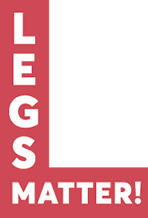We talk a great deal about wound inflammation and many of you will be aware of the cellular process involved in chronic wound inflammation. Raised Matrix metalloproteinases (MMP’s) and cytokines within the wound are often seen as the culprits as to why wounds are failing to heal.
However, are you aware venous hypertension raises these same enzymes within the tissues whether you have a wound or not?
At the Centre of Interdisciplinary Research on Compression (CIRC) conference in October 2019, Leanne Atkin and Alison Hopkins had the pleasure of listening to key researchers and experts in this field. All the presentations pointed to the powerful response of inflammation in the leg and tissues in response to gravitational venous hypertension.
Many of the symptoms patients report are solely related to the inflammatory response: eczema, oedema, lipodermatosclerosis, itching, aching and heaviness. These are all due to the activation of a number of inflammatory markers, including MMP’s and cytokines, just like in a wound.
So it is exciting to hear that compression has a potent role in reducing these inflammation mediators. Compression therapy has been proven to reduce MMP’s and cytokines delivering a high anti-inflammatory action. So forget about nonsteroidal anti-inflammatory drugs – instead think what dose of compression you need to administer to create an anti-inflammatory effect.
Compressing dosing needs to be individualised; we need to move away from the magic 40 mmHg, as for many patients this may not be a strong enough dose of anti-inflammatory treatment.
So it was fabulous to listen to experts at the CIRC describing how this this inflammatory response could be ‘switched off’ with effective compression. But the reality is that we have an increasing use of sub-optimal or no compression in the UK. We realise that our everyday practice is a long way from this this emerging science. How can we bridge this gap? How do we cascade this knowledge and translate into benefits for our patients and staff?
Do we need to change the narrative from talking about a wound being stuck in the inflammatory stage to the limb being stuck there too? Would this make the need for compression clearer for you and your patients?
The task for us is to ensure we all recognise venous skin changes and oedema as part of the inflammatory process. We are fortunate that unlike many other inflammatory conditions such as arthritis and cancer, the destructive stimulus can be turned on and off by simply standing/lying or mitigating this by the appropriate dose of compression therapy. So ‘switching off leg inflammation’ is a concept that we need to get our heads and words around; it brings a powerful emphasis to the role of compression as a therapy, the art and technical application by the practitioner and the individual dose required for our patients.
The challenge to all of us is to:
- Recognise that the inflammatory state of the limb needs to be actively reduced
- Appropriately titrate the dose of compression to ensure you have anti-inflammatory response
- Understand that compression therapy is a potent therapy that is powerful, proven and effective









